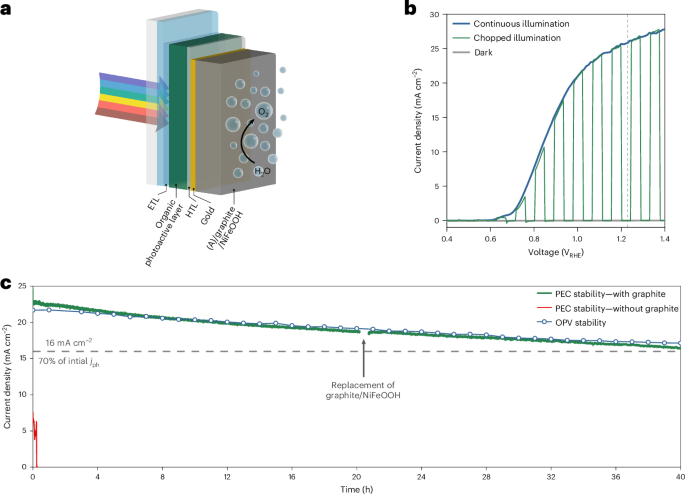Real time data visibility
By Andrew Southgate, V.P. Business Development and Jason McElravy, Principal Product Architect, Lucas Systems. Real-time data visibility has become a crucial component of modern warehouse operations, enabling companies to be proactive rather than reactive when addressing challenges. By maintaining continuous observability of key operational data, warehouse operators can quickly identify inefficiencies, mitigate disruptions, and optimise [...] The post Real time data visibility first appeared on Warehouse & Logistics News.

By Andrew Southgate, V.P. Business Development and Jason McElravy, Principal Product Architect, Lucas Systems.

Real-time data visibility has become a crucial component of modern warehouse operations, enabling companies to be proactive rather than reactive when addressing challenges. By maintaining continuous observability of key operational data, warehouse operators can quickly identify inefficiencies, mitigate disruptions, and optimise performance. But several panels and numerous discussions at the supply chain industry conference Manifest 2025 uncovered what many in the industry are feeling – that leveraging supply chain data remains a headache. Let’s review some practical and long-term applications for capturing and utilising your data.
The importance of real-time data visibility
In our recent whitepaper, we highlighted the pillars and enablers of creating a more dynamic warehouse. The Dynamic Warehouse is defined as a warehouse that can quickly, and cost effectively respond to changes in supply, demand, and resources, by continuously optimising operations, leveraging smart software, hardware, real-time data and adaptable decision-making technology.
Dynamic warehouse technical infrastructure should provide comprehensive access to operational data at all times. This ensures that operators and decision-makers can immediately respond to fluctuations in productivity, unexpected bottlenecks, and system performance issues. For instance, if productivity suddenly drops by 20%, supervisors should be able to pinpoint whether it’s due to a labour shortage, equipment downtime, or system inefficiencies.
The ability to monitor system health through a suite of key metrics is vital. But to be able to view, easily interpret those metrics and make them actionable is the bridge that makes data truly valuable. There should be the ability to implement a systems health monitor suite of metrics, which can tell you if the system is functioning properly or if there are any urgent issues. This allows you to be a better steward of your role in the overall process and ensure your link in the supply chain and overall operation is solid. By leveraging real-time insights, warehouse managers and corporate leaders can transition from firefighting operational issues to proactively optimising workflows and preventing disruptions before they escalate.
Using data to enhance everyday operations
One powerful example of real-time data visibility in action is the Lucas Management Console. This highly configurable tool provides end-to-end visibility into warehouse operations, offering insights into exceptions, associate productivity, and workflow optimisation. For example, Leroy Willis, Night Supervisor at the Louisville, Kentucky facility of beverage distributor RNDC, highlights the value of data visibility tools in daily warehouse management: “During my production shift, I can view real-time progress and decide where to best allocate workers to keep us on pace.”
As illustrated above, by leveraging live data feeds, operators can dynamically reallocate workforce resources to maintain productivity levels, shifting labour to high-demand zones in response to order surges or bottlenecks. This prevents overstaffing and minimises idle time. Continuous monitoring of key performance indicators (KPIs) such as pick rates and order cycle times helps identify and resolve inefficiencies in picking, packing, and shipping. Whether due to suboptimal workflows, outdated processes, or incorrect slotting strategies, data-driven insights enable continuous optimisation. Additionally, real-time tracking improves order accuracy by detecting mispicks, inventory shortages, or barcode scanning errors, allowing managers to address discrepancies immediately and prevent costly shipping mistakes. Similarly, if an uptick in damaged goods is detected, supervisors can quickly analyse damage reports, handling data, and equipment logs to determine whether the root cause is improper handling procedures, mechanical failures, or insufficient training.
Data-driven strategy for long-term growth
While real-time data visibility plays a significant role in daily operations, its value extends far beyond the warehouse floor. It also serves as a strategic asset at the corporate level, feeding into a digital transformation strategy that informs long-term business decisions and growth strategies.
Real-time data integration should be a key component of an organisation’s digital vision. Data and system integrations and configurations should extend to corporate application programming interfaces (APIs), data lakes, BI tools and control towers that are part of an organisation’s digital vision and fit into their overall supply chain visibility and execution decisions.
Companies that integrate warehouse data into their broader corporate strategy gain a significant competitive advantage by improving efficiency, reducing costs, and enhancing overall supply chain performance. By analysing trends in order volume, inventory movement, and warehouse capacity utilisation, businesses can accurately forecast growth and expansion needs.
Optimising cost structures is a critical benefit of leveraging warehouse data. By identifying inefficiencies in labour deployment, material handling, and shipping processes, companies can streamline operations and eliminate unnecessary expenses. For instance, real-time labour analytics might reveal that certain shifts are consistently overstaffed while others struggle to keep up with demand, allowing managers to adjust schedules for better productivity. Similarly, data-driven insights into material handling processes can highlight bottlenecks, leading to targeted investments in automation, which reduce manual labour costs and improve throughput. Poole Bay Holdings, a U.K. ecomm retailer, was able to significantly impact their cost, reducing labour by 50% while increasing throughput by 50% by implementing a data-rich software automation solution.
Customer satisfaction also improves when businesses use warehouse data to refine their order fulfilment strategies. Faster processing times and reduced error rates translate to on-time deliveries and fewer returns. Real-time tracking of inventory accuracy and order fulfilment performance allows managers to detect and correct issues before they escalate, such as stockouts, mispicks, or delayed shipments. For example, if data shows a high frequency of errors in a specific picking zone, managers can investigate potential causes—whether it’s inadequate training, poor slotting strategies, or outdated scanning technology—and implement corrective measures to improve accuracy and speed.
Finally, leveraging warehouse data strengthens supply chain resilience by helping companies anticipate disruptions and develop contingency plans. Predictive analytics can identify patterns in supplier delays, transportation bottlenecks, or demand fluctuations, allowing businesses to take proactive steps such as diversifying suppliers, adjusting inventory buffers, or securing alternative shipping routes. By embedding data-driven decision-making into corporate strategy, businesses create a more agile and responsive supply chain that can adapt to changing market conditions and unforeseen challenges.
If a company plans to expand its distribution network in the next three to five years, warehouse data can reveal patterns in order frequency, seasonal peaks, and fulfilment efficiency. By analysing this data, executives can make informed decisions about when and where to open new facilities, invest in automation, or enhance labour strategies.
Real-time data visibility is no longer a luxury, it’s a necessity for modern warehouse operations. By integrating real-time analytics into both daily workflows and long-term strategic planning, companies can optimise performance, reduce costs, and ensure seamless supply chain execution. For warehouse managers, leveraging real-time insights means being able to make smarter, faster decisions that drive efficiency and productivity. For executives, it means having the data needed to shape future growth, investment, and innovation. Organisations that prioritise real-time visibility are better positioned to navigate challenges, seize new opportunities, and maintain a strong competitive advantage in an increasingly dynamic marketplace.The post Real time data visibility first appeared on Warehouse & Logistics News.









































































































































































.jpg)








